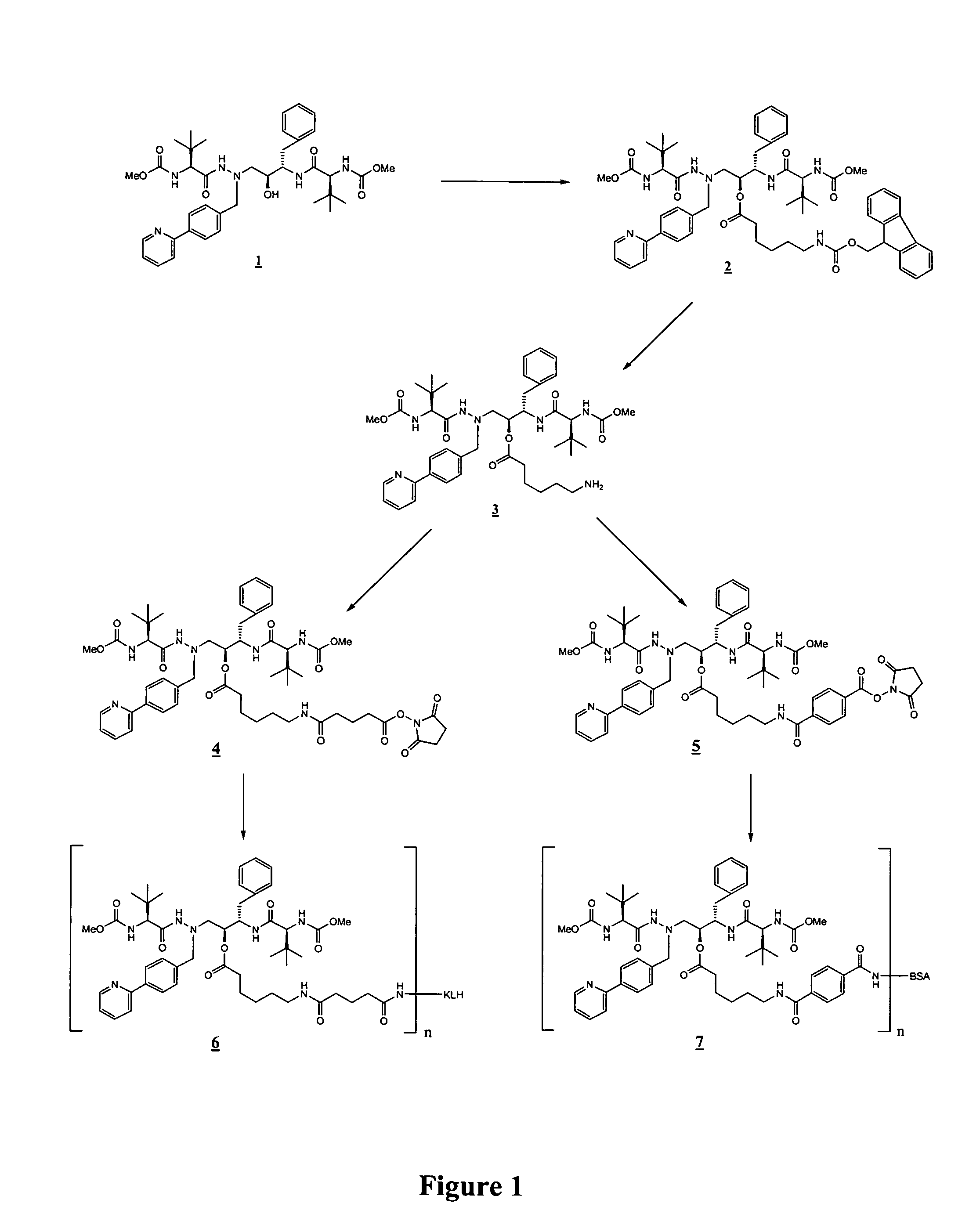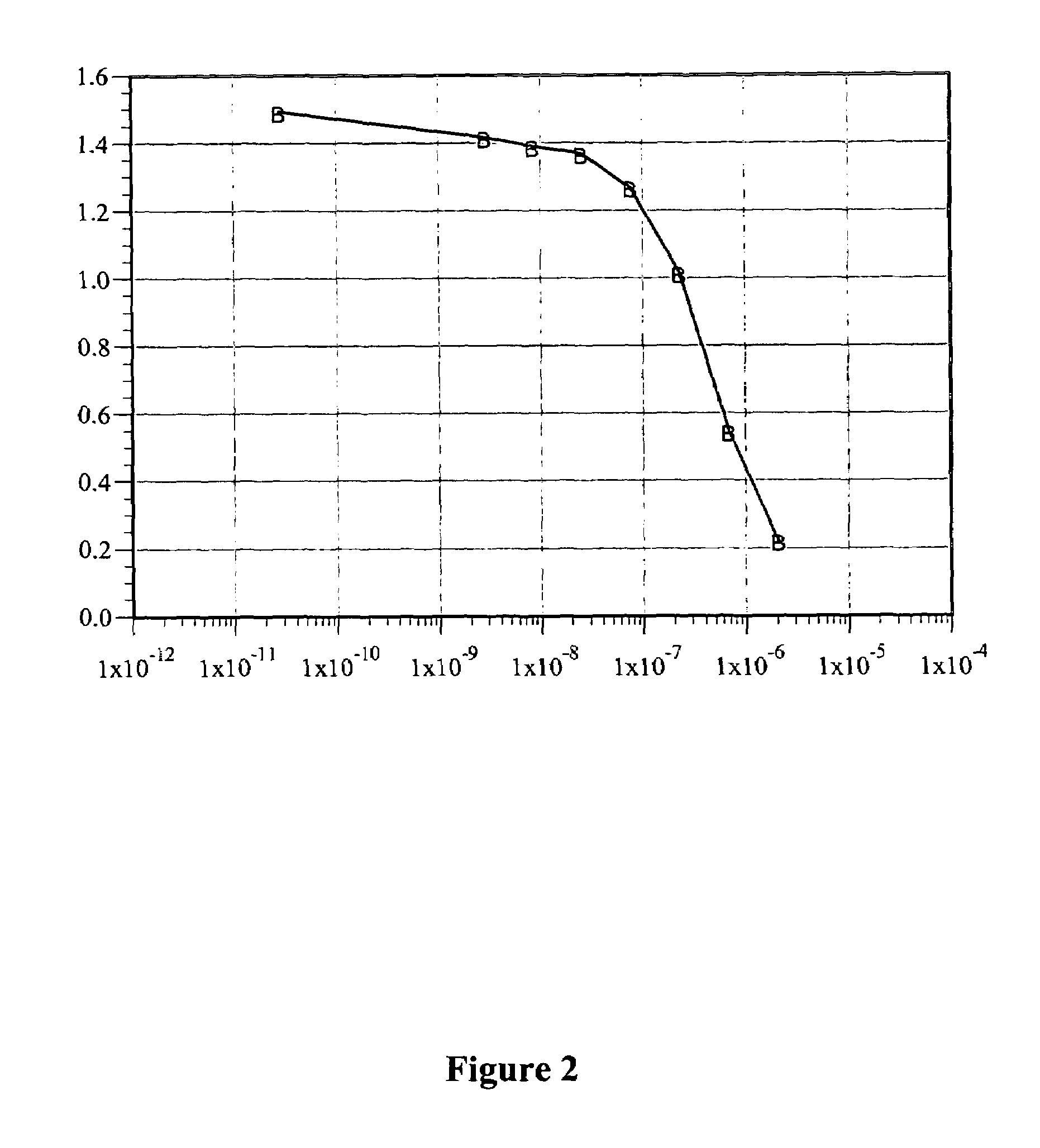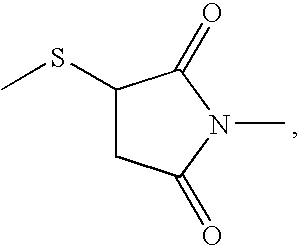Methods of inhibiting transmission of a costimulatory signal of lymphocytes
a costimulatory signal and lymphocyte technology, applied in the field of protease inhibitor conjugates and antibodies, can solve the problems of complex drug-drug interactions, not all patients respond optimally to protease inhibitors, and complex pharmacokinetics
- Summary
- Abstract
- Description
- Claims
- Application Information
AI Technical Summary
Benefits of technology
Problems solved by technology
Method used
Image
Examples
specific embodiments
[0070]In the examples that follow, numbers in boldface type refer to the corresponding structure shown in the drawings. These examples are presented for illustration only without any intent to limit the invention.
O-Acylation of Atazanavir
example 1
Synthesis of Oc—(N-FMOC-aminocaproyl)-atazanavir (2)
[0071]Oc-(N-FMOC-aminocaproyl)-atazanavir (2) was prepared by stirring atazanavir (1, 0.20 g), FMOC-aminocaproic acid (0.010 g, 1 eq), DCC (0.059 g, 1 eq), and DMAP (0.038 g, 1 eq) were stirred overnight in anhydrous methylene chloride (40 mL) at room temperature. Following this, an additional 0.5 eq of FMOC-aminocaproic acid and 0.5 eq of DCC were added, and stirring continued for a further 3 days. The mixture was filtered, and the filtrate was evaporated to dryness under reduced pressure and directly purified by silica gel chromatography under a positive pressure of nitrogen (3% methanol in chloroform elution) to give the product Oc-(N-FMOC-aminocaproyl)-atazanavir (7A, 210 mg; 71%) as a white solid. M+H 1040.5.
Deprotection of O-acylated Atazanavir
example 2
Synthesis of Oc-(aminocaproyl)-atazanavir (3)
[0072]Oc-(N-FMOC-aminocaproyl)-atazanavir (2) from Example 1 (0.092 g) was stirred 1 hour in 10% piperidine in anhydrous methylene chloride (4 mL) at room temperature. The mixture was evaporated to dryness under reduced pressure. Two silica gel chromatography purifications were performed, the first column using 40% methanol in ethyl acetate (EtOAc) and the second column using 20% methanol in EtOAc to give the product Oc-(aminocaproyl)-atazanavir 3 as a solid (0.070 g, 97%). M+H 818.4.
[0073]In another run, 3 was isolated as the trifluoroacetic acid (TFA) salt after purification by preparative RP-HPLC (C18, gradient of 5% to 100% of 0.1% TFA-acetonitrile in 0.1% TFA-water).
Linker Extension of O-Acylated Atazanavir to Generate Activated Haptens
PUM
| Property | Measurement | Unit |
|---|---|---|
| time | aaaaa | aaaaa |
| temperatures | aaaaa | aaaaa |
| temperatures | aaaaa | aaaaa |
Abstract
Description
Claims
Application Information
 Login to View More
Login to View More - R&D
- Intellectual Property
- Life Sciences
- Materials
- Tech Scout
- Unparalleled Data Quality
- Higher Quality Content
- 60% Fewer Hallucinations
Browse by: Latest US Patents, China's latest patents, Technical Efficacy Thesaurus, Application Domain, Technology Topic, Popular Technical Reports.
© 2025 PatSnap. All rights reserved.Legal|Privacy policy|Modern Slavery Act Transparency Statement|Sitemap|About US| Contact US: help@patsnap.com



